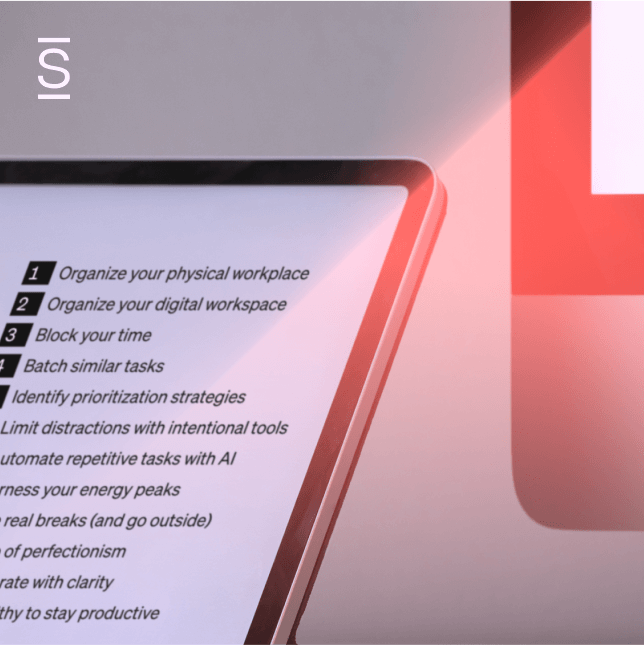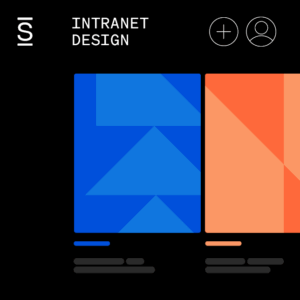A couple of years ago, Erik was straight out of college and beyond excited to land his first real job. To make it even better, his team members were welcoming and dedicated. Erik was thrilled to be part of a team that was making a difference for the company.
But as time went on, the shine began to wear off. Erik lost interest in his work and started to see his job as a paycheck more than anything else. What happened? Erik became a disengaged employee.
How does an engaged employee become disengaged? And how can you turn things around?
Let’s dig into how disengagement happens, a few warning signs and pitfalls to watch out for, and how you can use a digital workplace to reignite that spark of excitement.
Disconnected: when employees are disengaged at work
After a while, Erik started to feel that he was just another cog in the wheel. He felt that his effort didn’t matter, and that all his dedication and enthusiasm for the company wasn’t valued. And he thought, “If the company doesn’t care about me, why should I care about my work?” And just like that, he became a disengaged employee.
Like Erik, many disengaged employees don’t start out that way. Disengagement happens over time. Without intervention, happily engaged employees can disconnect. Moving through apathy into disregard, disengaged employees can even become actively disengaged, working to undermine the company’s success.
Disengaged at work: Spotting signs of trouble
If you can spot the signs of an employee on the way to disengagement, it’s not too late. Rather than let a once-great employee disappear into mediocrity, remember what motivated them at the beginning. Fortunately, disengagement isn’t difficult to see:
- Demotivation. Is an employee slowing down in completing work? Are managers noticing a drop in performance overall? Poor performance, especially in comparison to earlier work, is a great indicator of a drop in engagement.
- Absenteeism. Another good indicator of a drop in employee levels of engagement is frequently missing work. Disengaged employees are less likely to discuss their schedules and don’t bother to try to work around the company’s needs. Instead, they’ll show up late, leave early, and eventually start to disappear.
Apathy is contagious—creating disengaged customers and co-workers
Disengagement affects everyone, but nobody more so than customers—even if employees never see the customers they serve.
A disengaged employee working in a warehouse might work slower, or with less care, so a customer may receive packages later than expected, or their package may arrive at the wrong address. A careless, demotivated employee in production could easily affect product quality. Disengaged workers are also more likely to make mistakes and not care enough to fix them. If a customer has a poor experience with your product, what will motivate them to come back to you? The sale you worked hard to close will most certainly become a disengaged customer.
Even if your company has good oversight or talented workers to pick up the slack, that extra work causes resentment and overwork, which can quickly lead to burnout. And then you have another disengaged employee on your hands. Before you know it, disengaged employees will affect your profitability, reputation, and ability to attract new team members.
“If I could give zero stars…” Employee disengagement is toxic in recruitment
They say misery loves company. So it’s almost inevitable that disengaged employees will find each other. Remember our bad-attitude newbie, Erik? Lately, he’s starting to spend more time with his co-worker Kevin. Kevin is actively disengaged: he can’t stand his employer, so he does whatever he can to undermine them—including distracting his co-workers. Peer pressure can affect engaged, disengaged, and actively disengaged employees equally. Kevin’s poor work and bad attitude infect his team, including Erik. As management starts to take notice, Kevin decides to quit one day, and he never comes back.
Erik’s team has to scramble to cover the extra work, and the HR department starts looking for Kevin’s replacement. Much to their dismay, Kevin and Erik’s poor attitude spread to many employees they interacted with. Less-than-stellar reviews on sites like LinkedIn and Glassdoor paint a dismal picture to potential new employees. Disengaged employees stoke the fire of demotivation, and soon, great employees, tired of picking up the slack from unhappy ones, begin to disconnect themselves.
In highly engaged workplaces, your employees are your greatest allies. They’re eager to refer their friends and family for job openings because they see the company as a great place to work. But when your workplace falls into disengagement, you lose out on those opportunities. Now imagine disengaged employees interviewing potential candidates. Do you expect they’ll display a lot of energy when they talk about the company or what it does?
Replacing employees takes a lot of time and money. When retention falls, it gets harder to recruit employees who feel engaged from the start.
The good news: you can improve employee engagement
All is not lost. It’s possible for disengaged employees to re-discover their passion if you take the proper steps. In other words, you can leverage some techniques to motivate disengaged employees. And one of the easiest ways to increase levels of engagement across the board is to implement a digital workplace:
Automate mundane work to banish boredom
Human minds wander far beyond the realm of Henry Ford’s concept of the assembly line. He couldn’t have been more wrong in his theory that people could be content doing the same thing over and over. Luckily, today we can automate most mundane tasks so that people can focus on more challenging work. Yes, there was a time when people believed machines would take their jobs, but people couldn’t imagine at the time that automation would free their creative spirits. And now, workers can have more fulfilling days, reigniting their love for the job they once cared so much about.
Rather than eliminating jobs, most automation software improves your employees’ work environment. It frees their time for more exciting tasks while increasing their efficiency and productivity.
Using a truly engaging intranet to motivate disengaged employees can make the difference
Suppose you had a company intranet—not the old-fashioned kind that greets employees with a blank screen and a search box, but one that looks like their favorite social media sites.
Many companies have found great success getting employees to re-engage by using modern intranet software like this—filled with company information, interest groups, chat, and engagement activities that make employees check in every day. The modern intranet is a great way to reach employees with messages about how much the company appreciates and recognizes them and all the work they do.
A modern intranet platform also helps you implement and run employee recognition programs that can re-motivate and re-energize disengaged employees. As a result, you can truly transform digital workplace culture with employee engagement.
Do employees know their objectives? Can they see how they’re doing clearly?
One of the best ways to motivate a disengaged employee is to keep goals in front of them. In fact, a lack of clear expectations is the number one cause of employee dissatisfaction. It’s hard for employees to stay engaged when they’re never quite sure why they’re doing something or if their daily tasks and projects even matter.
It’s up to you to make sure employees know and understand their purpose. Setting expectations and target metrics show employees what they need to do, helps them keep track of their progress, and provides insight into how they contribute to the bottom line.
Tune in remote workers with digital meetings
According to a recent Gallup poll regarding the future of hybrid work, 39% of employees now work entirely from home, and 42% of employees are on a hybrid schedule. Does it make any sense to hold meetings entirely in person?
During the height of the pandemic, sporadically-used video conferencing services like Zoom, WebEx, Google Meet, Slack, and others became lifelines to dispersed workers. Virtual engagement activities like happy hours and water coolers sprung up rapidly to connect employees. It wasn’t unusual to see workers in front of their computers wearing goofy hats and t-shirts to lighten the mood and keep each other engaged.
The pandemic demonstrated conclusively that digital communication tools help keep your in-house and remote teams engaged with each other, with no disruption. So whether you’re managing projects, file sharing, instant messaging, or in video calls, including remote workers in meetings is a powerful way to keep employees close. And, of course, provide some much-needed silliness.
Keep employees in the know with live and on-demand webinars
When employees are actively disengaged at work, try offering them learning opportunities. For example, webinars and other videos provide a chance to hone in an existing skill, learn a new one, or understand how to use new technologies at work. The list is endless. With streaming video classes, all-hands meetings, and interactive gatherings, employees have a window into a new world, right on their desktops, for free. And they share it with co-workers to enhance the collaborative experience and make it memorable.
Be sure to offer different viewing options. Not every employee can tune in live, even if they’d like to. On-demand viewing is crucial for getting the largest viewership, and ensures that no one feels left out because of work commitments, time zones, or remote work.
For internal communications, consider a company-wideintranet with native video capability.
Final thoughts
Remember Erik? The new guy who lost his motivation—and his way—with his new employer? It’s a good thing that someone noticed his malaise. Once an employee experience team member pointed him toward the digital workplace, he was able to find new avenues of engagement. And it’s a good thing Erik got his groove back: he was a valuable addition that the company wouldn’t want to lose.
One of the fastest, easiest ways to increase your levels of engagement is to lean into digital workplace tools.
Instead of spending time and money researching countless tools and apps designed to facilitate different aspects of the digital workplace, start with modern intranet software.
- It works with the tools and systems you already use
- It’s a great employee engagement tool straight out of the box
- It’s fast to implement and extremely easy for employees to use
Request a demo today to see how a fast, effective intranet could improve your employee engagement.

















